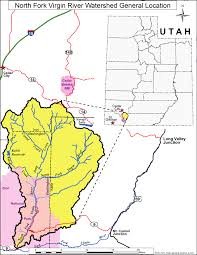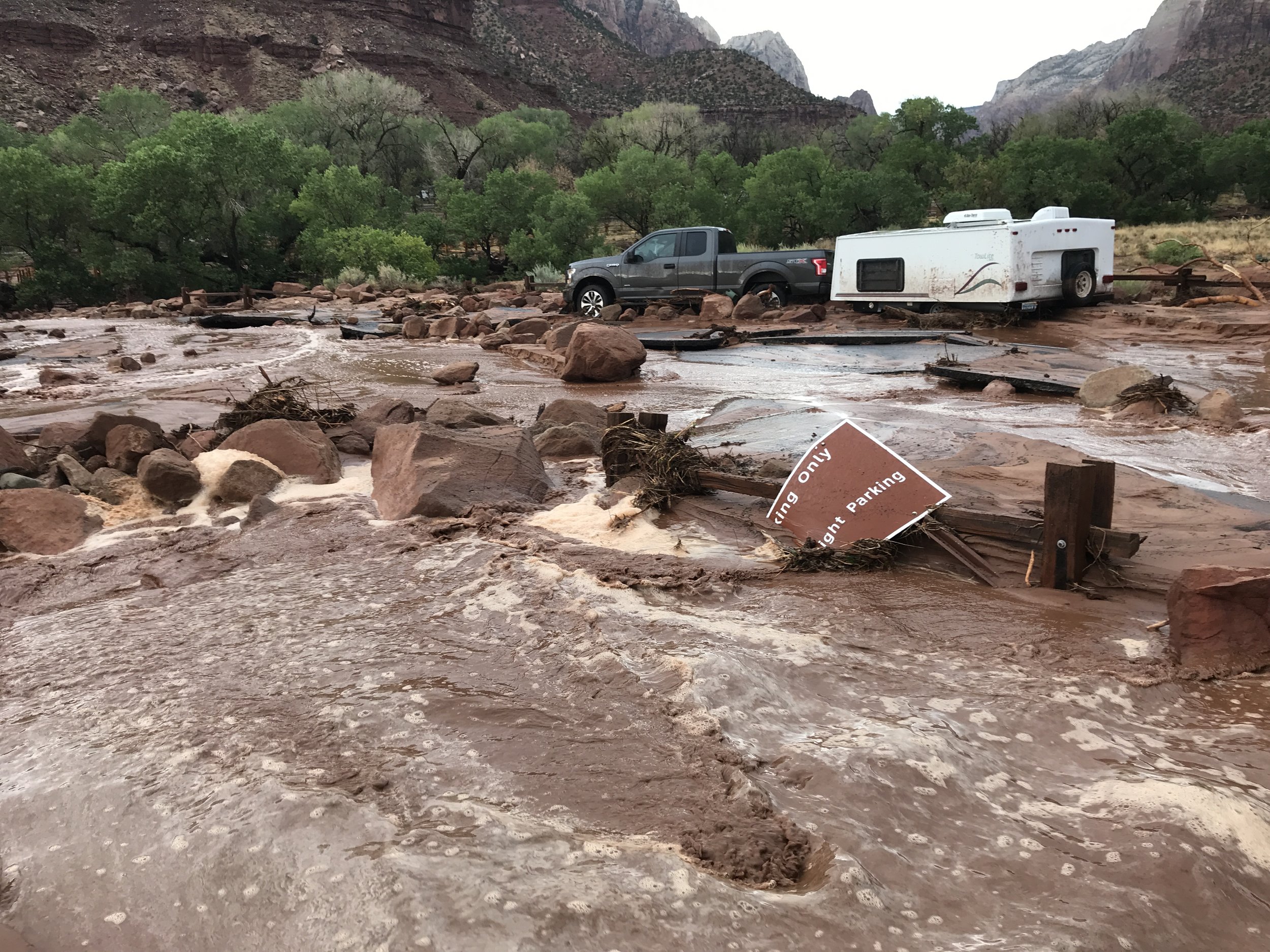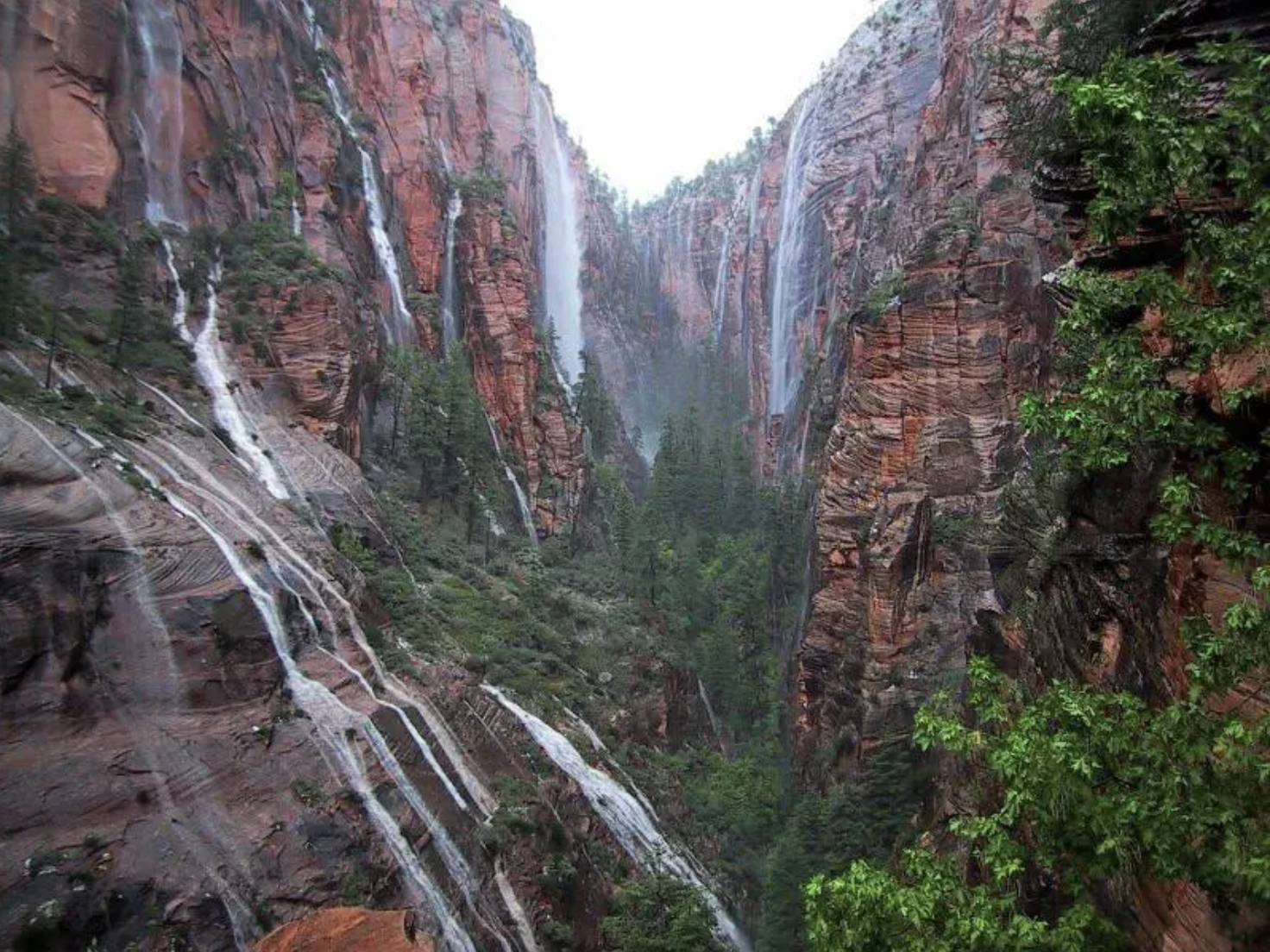MONSOON SEASON?
Water or more specifically rain is something most people assume is non-existent in a desert landscape. Although this is *mostly* true, heavy rains is something that in fact defines and shapes the desert. These heavy rains are called Monsoons.
This article will provide an overview of what a monsoon is, how it affects the desert landscape, and how it could affect you if you are visiting Utah, Zion or anywhere in the southwest.
North Fork Virgin River Watershed general area.
WHAT IS A MONSOON?
Monsoon season is a time of year in which the colorado plateau receives times of concentrated rainfall. The typical monsoon season is June through September. In the map shown you can see the large land area, 360 square miles which is the watershed that feeds into Zion National Park. When rain falls in any of these areas the water is flushed down through the very popular and well-known canyon within Zion known to most as The Narrows.
Monsoons clean rivers, deepen canyons and provide much-needed hydration to the desert landscape. Specifically, a monsoon is a weather pattern that changes the winds which usually moving through the National Park. This shift in wind direction brings moisture from the northeast releasing it throughout the southwest. Since our landscape does not receive much moisture the heavy rains do not get absorbed into the ground. The water instead runs along the surface, widening rivers, creating new canyons, and finding its way along the least resistant route.
WHAT IF MY VACATION IS DURING MONSOON SEASON?
Image of ZNP visitor center parking lot during 2021 flash flood. Photo credit: Zion National Park Photo
With unpredictable amounts of rainfall, the effects of monsoon can vary. If you are traveling during monsoon season and have a guided tour or rental scheduled; cancellation or rescheduling of trips and rentals is often possible. Safety is the highest priority of any tour operator and the safety levels in various canyons can change at a moment's notice. This is where there can be benefits in hiring a guide, it is the responsibility of the guide to read the weather patterns, know if rain is a possibility, and make a decision on where to explore based on this information.
While certain guided tour locations may be safe during heavy rain, others could be disastrous. Hiring a local expert certainly helps with the anxiety of wondering if where you are exploring is safe.
Although rain in our desert landscape can bring potentially unsafe conditions it can also bring opportunities to see unique and rare sightings.
Image of waterfalls releasing throughout Zion during monsoon. Photo Credit: My Star Vacation Rentals, Kanab
Because of Zion’s massive sandstone walls and water routes, large waterfalls begin to flow when heavy rains fall north of the canyon. So, even if you have a guided tour and your plans have to change, ask your guide or local shop staff if waterfall hunting is a good option instead. At Zion Guide Hub our guides are intimately connected to both the local landscape and weather and would love to see and share special moments like rain in the desert or waterfalls in Zion with you. To inquire about booking with us this monsoon season and to see the beauty that Zion National Park has to offer, visit here.
HOW TO BE PREPARED?
Being prepared for any experience outside is essential and there are some simple things you can think about or bring with you to make sure that you are prepared for anything the wild outdoors throws at you, especially if it is a massive rainstorm. Here is a list of what we recommend:
Bring rain gear (jackets and ponchos are best)
Check the weather the morning of your trips (20% chance of rain means there is a 100% chance of rain but a 20% chance you'll be standing under it)
We recommend the weatherunderground.com resource
Use the 30/30 rule
When you see lightning, start counting to 30 and if you hear thunder before you reach 30 then seek shelter
Talk with your guide or a local representative about possible alternative activity options.
Listen for roaring water or look for muddy water in streams, this is usually an indication of a flash flood approaching.
Seek higher ground IMMEDIATELY, flash floods are called this for a reason - they move fast.
The desert is an ever-changing place and could be sunny in the morning and by noon have large rain clouds on the horizon. During monsoon season this is a daily experience and so although dark heavy clouds do not guarantee rain please be aware that your safety is dependent on knowing the odds of rain or avoiding canyons and water routes.
PLANNING A TRIP TO ZION?
Use some of our resources to be further prepared:
Historical weather details from Zion National Park - HERE
Let the planning be done for you with our 3-day Zion Itinerary - HERE
Review our Frequently Asked Questions page - HERE
SOURCES
North fork virgin river. (2018). Blog. Retrieved June 26, 2022, from https://www.epa.gov/sites/default/files/2018-12/documents/ut_nfvirginriver_1699_508.pdf
Monsoon. (2019). Monsoon. Retrieved June 26, 2022, from https://mystarvr.com/weather-zion-bryce-or-north-rim-grand-canyon/
ZNP. (2021). ZNP Flash Flood. Retrieved June 26, 2022, from https://www.accuweather.com/en/weather-news/monsoon-thunderstorms-wreak-havoc-at-zion-national-park/969707



